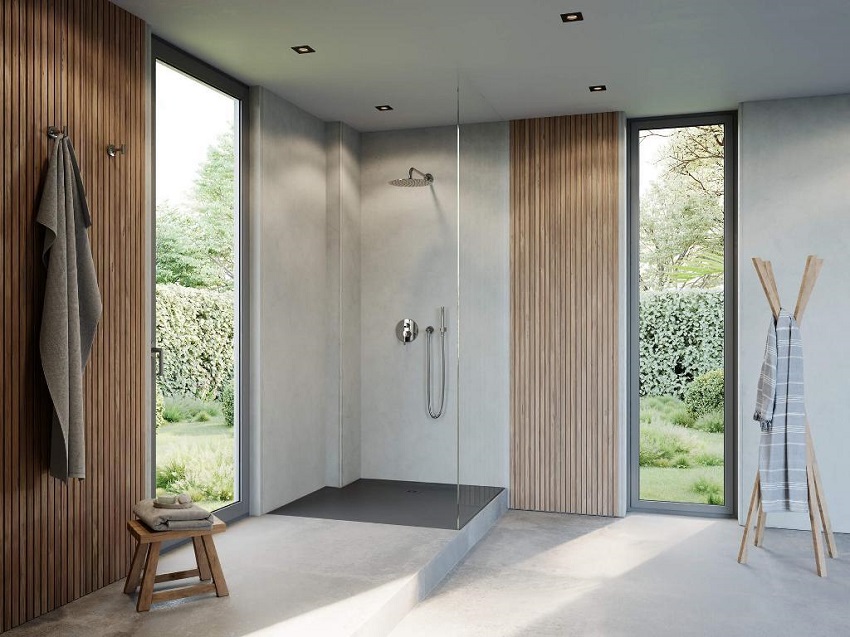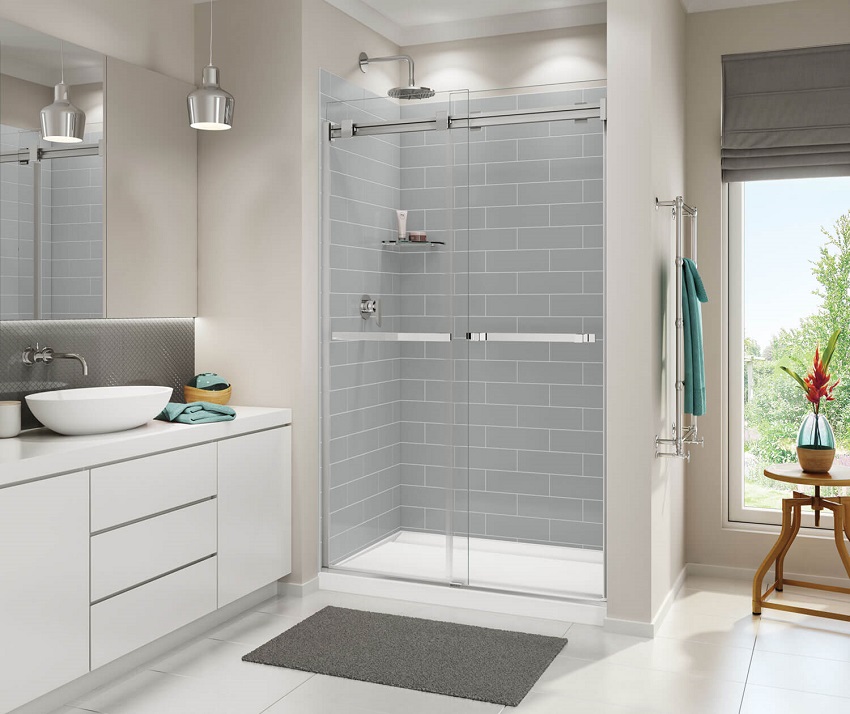
27 Aug What is the Difference Between a Shower Pan and a Shower Base?
In the world of bathroom design and renovation, certain terms often get thrown around interchangeably, leading to confusion for those who are not familiar with the nitty-gritty details of the industry. Two such terms that are commonly misunderstood are “shower pan” and “shower base.” While they might seem like they refer to the same thing, they actually have distinct differences that can significantly impact your bathroom project. In this article, we’ll delve into the world of showers and break down the disparities between these two crucial elements – the shower pan and the shower base. This article is presented by Marypwaters.com.
Understanding the Basics
What is a Shower Pan?
A shower pan, also known as a shower tray, is the waterproof bottom layer of the shower enclosure that collects and directs water to the drain. It’s designed to prevent leaks and water damage by containing any moisture that may seep through the shower tiles or walls. Shower pans are usually made from materials like fiberglass, acrylic, or tile, and they come in various shapes and sizes to suit different types of shower tray.
What is a Shower Base?
On the other hand, a shower base serves as the foundation for the entire shower. It’s a pre-formed, ready-to-install unit that includes the pan as well as the surrounding sides that create the walls of the shower. The shower base is a self-contained structure that is placed directly on the bathroom floor and often includes features such as built-in shelving or seating areas. It offers structural integrity and makes the installation process more straightforward, especially for those who might not have experience with tiling or construction.
The Distinctions
Installation Complexity
One of the key differences between a shower pan and a shower base lies in the installation process. Shower pans, being a single component, require careful measurements, precise slope adjustments, and meticulous sealing to ensure proper drainage and waterproofing. This can be a more intricate process, demanding a certain level of expertise.
On the other hand, shower bases come as complete units, simplifying the installation significantly. They are designed with built-in slopes and drainage systems, reducing the need for complex adjustments. This makes them a preferred choice for DIY enthusiasts and those looking for a hassle-free installation.
Customization Options
When it comes to design and customization, shower pans offer more flexibility. With a wide range of materials available, from traditional tiles to modern acrylic options, you can choose the look and feel that complements your bathroom aesthetics. However, keep in mind that the customization potential might come at the cost of a more intricate installation process.
Shower bases, while limited in terms of material options, make up for it with ease of installation. They are available in various sizes and shapes, but the design choices are often more standardized due to their pre-formed nature. If you’re looking for a quick solution with less design complexity, a shower base might be the way to go.
You may like to read: What is the Difference Between a Garden Tub and a Regular Bathtub?
Water Tightness and Durability
Shower pans, given their single-purpose design, are meticulously crafted to ensure water tightness and durability. Properly installed and sealed, they provide excellent protection against leaks and moisture-related issues. However, the key here lies in the quality of installation – cutting corners can lead to future problems.
Shower bases, being complete units, have the advantage of integrated designs that minimize the risk of leaks. The seamless construction and fewer joints result in a lower chance of water infiltration. This can be a significant factor in the long-term maintenance of your shower enclosure.
Which One to Choose?
The decision between a shower pan and a shower base ultimately depends on your specific needs, preferences, and circumstances. Here are a few points to consider:
- Skill Level: If you’re a seasoned DIYer or a professional contractor, a shower pan might allow for more creative freedom in terms of design. However, if you’re less experienced, a shower base could be a more practical choice.
- Time and Convenience: Shower bases are often quicker to install due to their pre-formed nature. If you’re working within a tight timeline or simply want a hassle-free installation, a shower base might be the better option.
- Design Aesthetics: If you’re seeking a unique design with intricate tile patterns and materials, a custom shower pan might be the way to go. However, if you’re content with standardized designs and want a straightforward solution, a shower base is worth considering.
- Long-Term Maintenance: Both shower pans and bases, when installed correctly, can offer excellent water tightness. However, the integrated design of shower bases can reduce the chances of leaks over time.
Conclusion
In the end, the difference between a shower pan and a shower base boils down to customization and installation complexity. Shower pans offer more design flexibility but require a higher level of skill and effort to install correctly. Shower bases provide a convenient and efficient solution, especially for those looking for an easier installation process.
When making your decision, consider your skill level, timeline, design preferences, and long-term maintenance concerns. Whether you opt for the versatility of a shower pan or the convenience of a shower base, ensuring proper installation and waterproofing is key to enjoying a functional and leak-free shower for years to come.

No Comments